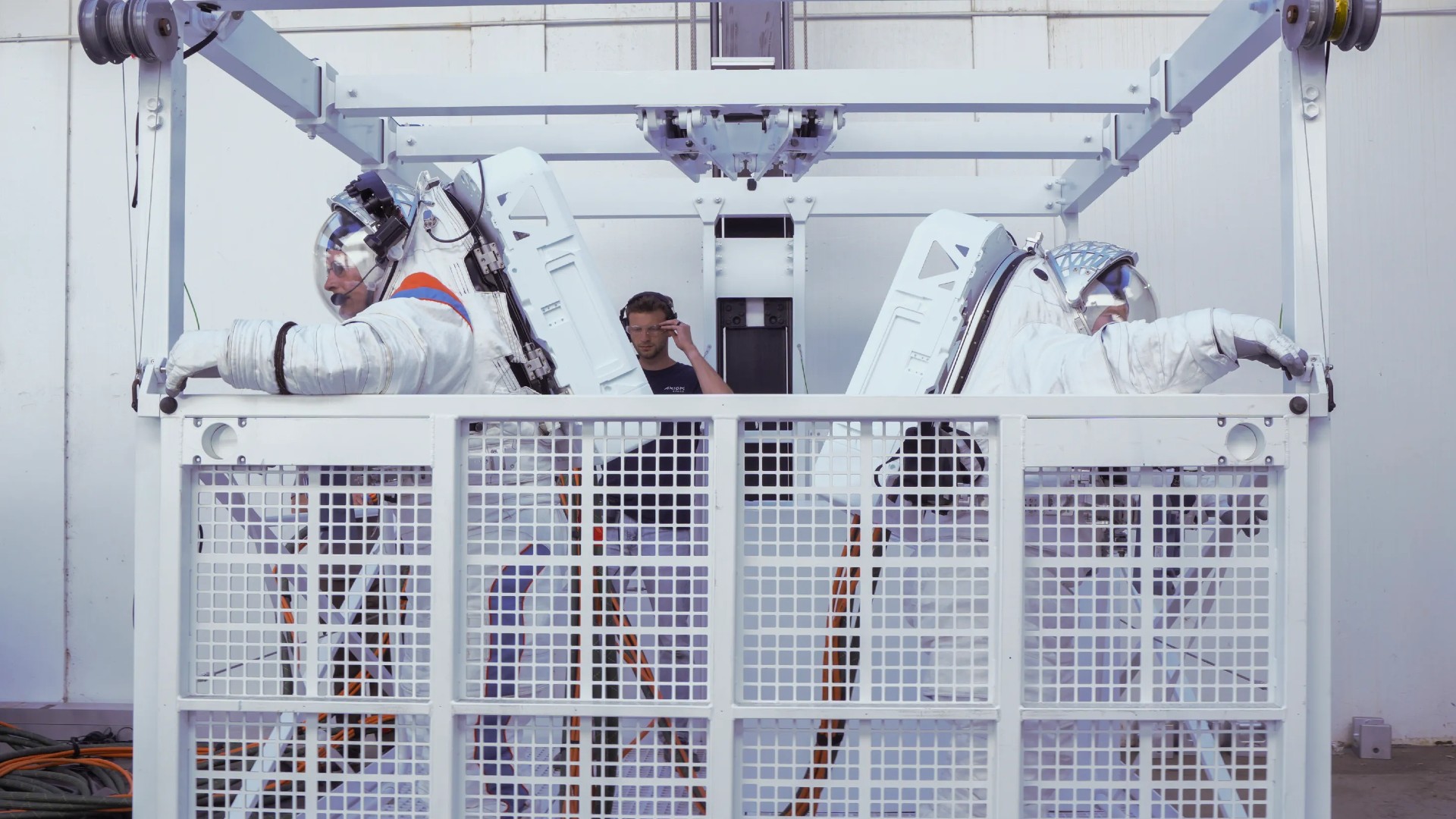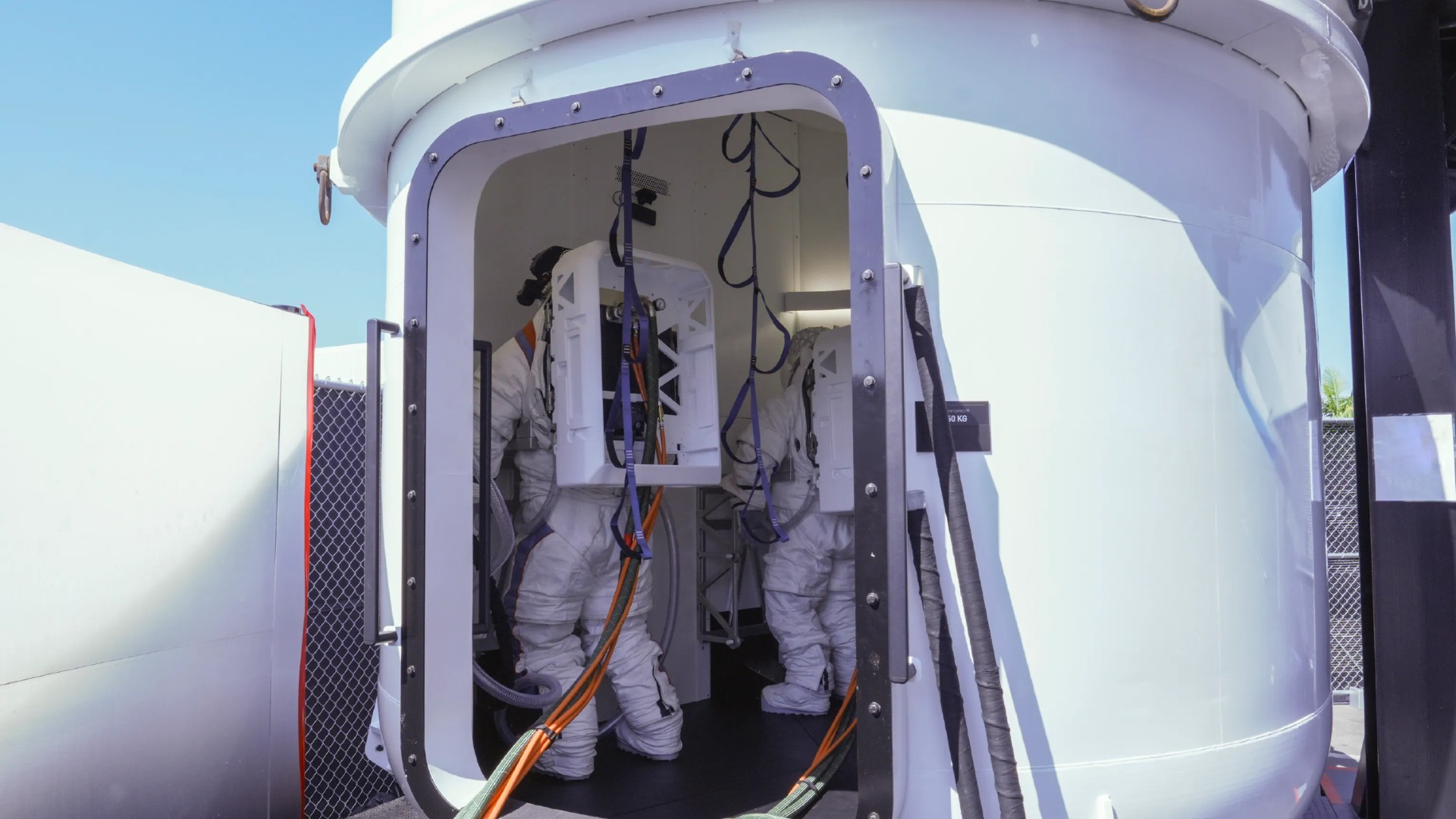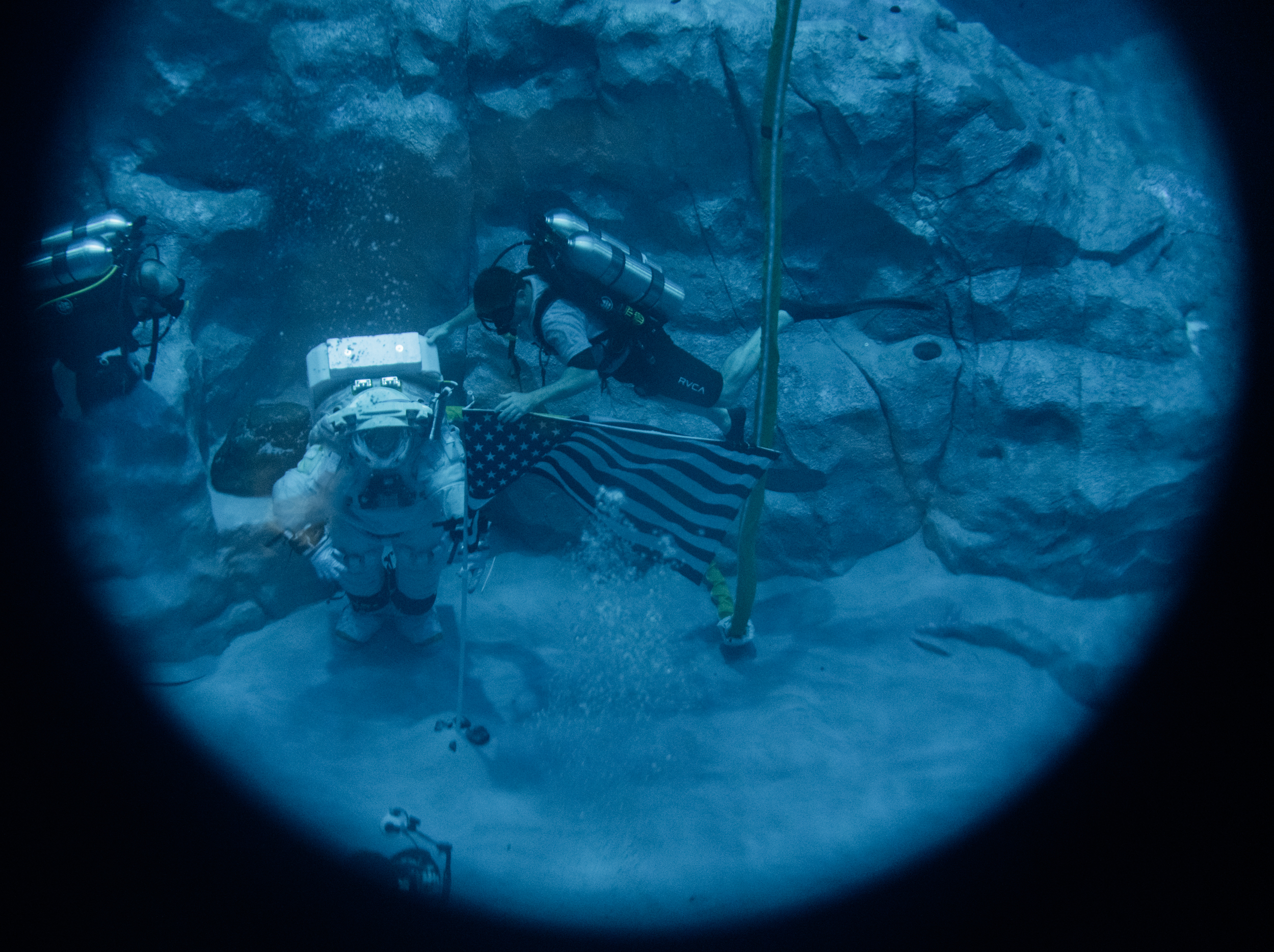Astronauts test SpaceX Starship hardware and spacesuits for Artemis 3 moon mission (photos)
The test "confirmed that the amount of space available in the airlock, on the deck, and in the elevator, are sufficient for the work our astronauts plan to do."

Come 2026, NASA plans to land humans on the moon for the first time since 1972. Times have changed, as can be gauged from the new rockets, spacecraft and spacesuits.
To prepare for the Artemis 3 moon-landing mission, in late April two astronauts donned Axiom Space's new spacesuits and for the first time tested out a mock version of the vehicle that will get them to the moon.
Scientists and engineers say the test — the first of its kind since the Apollo era — provided feedback on how well the spacesuits, being built by Axiom, worked with a test version of SpaceX's Starship Human Landing System (HLS), NASA's vehicle of choice to ferry astronauts to and from the moon during the Artemis 3 mission. They were able to gauge the layout of the HLS, including its layout, physical design and clearances, according to a NASA statement.
The three-hour test, which was carried out at SpaceX's headquarters in Hawthorne, California, was also useful to judge the flexibility of the spacesuits, and the ease of getting in and out of them before stowing them in the airlock with minimal assistance.
Two astronauts, Axiom Space's Peggy Whitson and NASA's Doug Wheelock, donned spacesuits in a full-scale mockup of the airlock that is perched on Starship's airlock deck. Each spacesuit also included a full-scale "backpack" model of the portable life support system, according to a statement by Axiom.
During the test, the astronauts interacted with a control panel in the airlock to ensure the controls were within reach and could be activated while wearing gloves, NASA said. They also practiced using a test elevator, which will take astronauts and their equipment from the Starship deck to the moon's surface for moonwalks during Artemis program missions.
"Overall, I was pleased with the astronauts' operation of the control panel and with their ability to perform the difficult tasks they will have to do before stepping onto the moon," Logan Kennedy, the lead for surface activities in NASA's HLS Program, said in the NASA statement. "The test also confirmed that the amount of space available in the airlock, on the deck, and in the elevator, are sufficient for the work our astronauts plan to do."
Breaking space news, the latest updates on rocket launches, skywatching events and more!
Related: NASA picks SpaceX's Starship to land Artemis astronauts on the moon
In March last year, NASA and Axiom revealed a prototype of the spacesuit, the Axiom Extravehicular Mobility Unit (AxEMU), which is being designed to be worn by astronauts both in-flight and on the moon. The company is beyond the preliminary design review point with NASA and will enter a critical design review phase later this year, Axiom said in its statement.
"Integrated tests like this one, with key programs and partners working together, are crucial to ensure systems operate smoothly and are safe and effective for astronauts before they take the next steps on the Moon," Amit Kshatriya, NASA's Moon to Mars program manager, said in the NASA statement.
In April, Axiom tested one of the unoccupied spacesuits in NASA's Neutral Buoyancy Laboratory, for which the company added weights to the suit to mimic the lunar environment, where gravity is just a sixth of Earth's. Soon, an astronaut will don the suit for the first test run in the water, the company said in its latest statement.
Meanwhile the astronauts' ride to the moon, Starship, is being developed by SpaceX to be fully reusable to aid economically feasible trips to the moon and eventually Mars. On Friday (June 7), the company moved closer to that goal with a successful fourth test flight that ended in smooth water landings for both the vehicle's Super Heavy booster and Starship itself.
Humanity's return to the moon, however, is now expected to occur no sooner than September 2026, after NASA delayed its touchdown plans from the originally targeted landing in late 2025. Issues with the Orion spacecraft's heatshield, life support systems and an electrical system in the crew abort system have contributed to the delays.
"As we prepare to send our friends and colleagues on this mission, we're committed to launching as safely as possible," Jim Free, NASA's associate administrator, had told reporters during a media teleconference in January. "And we will launch, when we're ready."

Sharmila Kuthunur is an independent space journalist based in Bengaluru, India. Her work has also appeared in Scientific American, Science, Astronomy and Live Science, among other publications. She holds a master's degree in journalism from Northeastern University in Boston.


